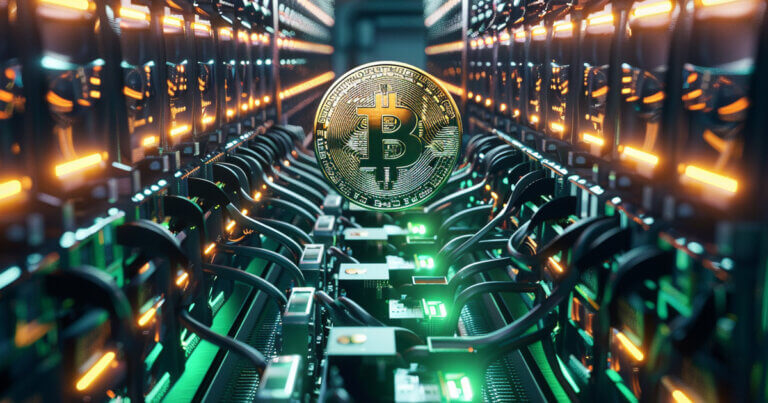Bitcoin mining is a fundamental process that powers the Bitcoin network, ensuring the integrity and security of transactions. This guide provides an in-depth look at Bitcoin mining, its significance, the mechanics involved, and how you can get started.
What is Bitcoin Mining?
At its core, Bitcoin mining is the act of verifying and adding transactions to the Bitcoin blockchain, a public ledger that records all Bitcoin transactions. Miners use specialized computers to solve complex mathematical problems, which secures the network and generates new bitcoins.
Why Is Mining Important?
- Transaction Validation: Miners confirm and validate transactions, preventing fraudulent activities like double-spending.
- Network Stability: The decentralized nature of mining enhances security, making the network resilient to attacks.
- Bitcoin Creation: Mining is the process through which new bitcoins are created and introduced into circulation, rewarding miners for their efforts.
The Mining Process Explained
1. Understanding the Blockchain
The blockchain consists of a series of blocks, each containing transaction data. When a miner successfully mines a block, it is added to the chain, making it part of the permanent public record. Each block is linked to the previous one, creating a secure and immutable chain.
2. Steps in the Mining Process
- Collecting Transactions: Miners gather unconfirmed transactions from the network.
- Hashing: Using a cryptographic hash function (SHA-256), miners generate a unique output (hash) based on the block’s data.
- Finding the Right Hash: Miners compete to find a hash that meets certain criteria set by the network, known as the “target.” This process requires significant computational power.
- Block Reward: The first miner to find a valid hash broadcasts the solution. If verified, they earn a reward in bitcoins and receive transaction fees from the included transactions.
3. Difficulty Adjustment
To maintain a consistent average block time of approximately 10 minutes, the Bitcoin network adjusts the mining difficulty every 2016 blocks (roughly every two weeks). This ensures that the network remains stable, regardless of the number of miners participating.
Types of Mining
1. Solo Mining
Solo mining involves an individual miner attempting to mine blocks independently. While this method can yield significant rewards, the chances of success are lower due to competition.
2. Pool Mining
In pool mining, miners combine their resources in a group to increase their chances of solving blocks. The rewards are distributed among members based on their contributed computing power, providing more consistent payouts compared to solo mining.
3. Cloud Mining
Cloud mining allows users to rent mining power from third-party providers. This approach eliminates the need for physical hardware and maintenance, making it more accessible for beginners.
How to Start Mining Bitcoin
1. Choose Your Mining Hardware
- ASIC Miners: Application-Specific Integrated Circuits (ASICs) are the most efficient hardware for Bitcoin mining. They are optimized for hashing, providing high performance.
- GPU Miners: Graphics Processing Units (GPUs) are less efficient for Bitcoin but can be used for mining other cryptocurrencies.
2. Decide on Mining Pool or Solo Mining
Consider whether you want to mine alone or join a mining pool. Mining pools provide a more reliable income stream, while solo mining may offer larger rewards if successful.
3. Download Mining Software
Select and install mining software compatible with your hardware. Popular options include CGMiner, BFGMiner, and EasyMiner, each with its features and interfaces.
4. Set Up a Bitcoin Wallet
Before you start mining, create a Bitcoin wallet to store your earnings securely. You can choose from various wallet types, including:
- Software Wallets: Installed on your computer or mobile device.
- Hardware Wallets: Physical devices that store your bitcoins offline.
- Web Wallets: Online services for easy access from anywhere.
5. Begin Mining
Once you have your hardware, software, and wallet set up, you can start mining. Keep track of your mining performance and expenses to ensure that your efforts are profitable.
Conclusion
Bitcoin mining is an essential process that supports the Bitcoin network and offers a potential source of income for participants. By understanding how mining works and the steps involved in getting started, you can make informed decisions about your mining endeavors. Whether you opt for solo mining, join a pool, or explore cloud mining options, the world of Bitcoin mining offers exciting possibilities. Happy mining!
